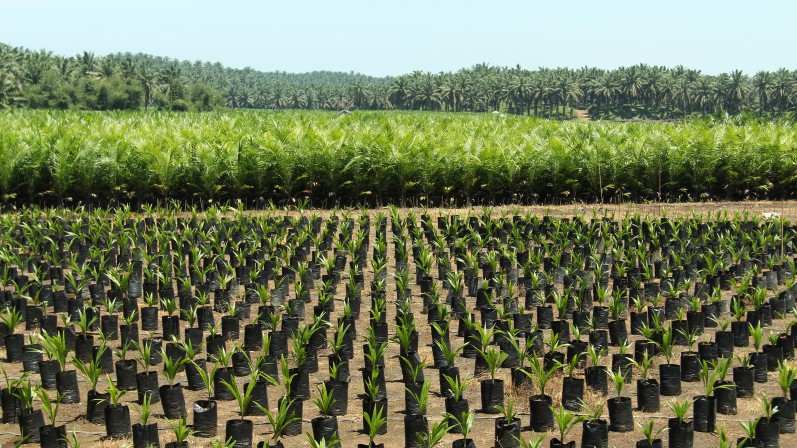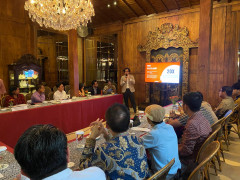A Silver Lining to Restoration in Concession Areas
By ZamzamiThe Integration of Social and Ecological Aspects in Peatland Utilization

Peatland is often seen merely as an economic resource, without recognition of its environmental value. However, with growing concerns about global climate changes, the social and ecological aspects of peatland utilization also need to be addressed. Otherwise, obtaining peatlands’ economic benefits will lead to higher cost.
Peatland is often seen merely as an economic resource, without recognition of its environmental value. However, with growing concerns about global climate changes, the ecological and social aspects of peatland utilization also need to be addressed. Otherwise, obtaining peatlands’ economic benefits will lead to higher cost.
This became one of the focal points in a discussion at the ‘Seminar on Peat Management Policy in Indonesia from the Ecological, Economic, and Social Perspectives’, held by the Institute for Economic and Social Research, School of Economics and Business of University of Indonesia (LPEM FEB UI, from the Bahasa translation) on February 27, 2018. Several expert speakers were invited to the seminar, which was attended by communities from various backgrounds.
One of the seminar speakers was Professor Emil Salim, the environmental expert who became the Chairman of the Indonesian delegation to the UN Climate Change Conference in 2007. He said that the fundamental problem currently is the conflict between efforts to improve oil palm plantation quality and the protection of peat ecosystems from fire and destruction.
Currently, palm oil is one of the most important commodity sectors for the Indonesian economy. Unfortunately, the development of the palm oil industry has driven the conversion of land, including peatlands, into plantations. The conversion of peatlands in Indonesia into large, industrial-scale plantations, such as those for palm oil, shows the highest intensity in Southeast Asia. This conversion has caused peatland to become so dry that it easily burns.
Moreover, according to Salim, palm oil plantation entrepreneurs require dry peatlands, as they produce better quality palm oil kernels. Water levels 0.6–0.8 m below the peat surface are optimal for palm oil production. This is why plantation owners object to Government Regulation No. 57/2016 on the Protection and Management of Peat Ecosystems, which sets the minimum water level as 0.4 m below the peat surface. Although the ideal minimum water level is scientifically debatable, it’s clear that when peatlands are wetter, the chance of fire is smaller.
LPEM FEB UI has estimated that the enforcement of Government Regulation No. 71/2014 – now replaced by Government Regulation No. 57/2016 – could result in economic losses of US$5.72 billion over the first five years. This estimate is based on expected decreases in raw material production due to reduced industrial forest areas in Indonesia.
However, this estimated economic loss is still far less than the loss incurred due to fire.
The World Bank reported losses of roughly US$16.1 billion – the equivalent of 1.9 percent of Indonesia’s gross domestic product (GDP) – from forest and land fires in 2015.
This figure does not account for the human casualties and health impacts of air pollution resulting from these fires. Of the 2.6 million ha of land burned in 2015, half were peatlands.
Salim explained that the integration of social and environmental factors in peatland utilization is unfavorable to business actors. However, it is critical to peat ecosystem safety and protecting communities from the impacts of environmental destruction.
So, what is the fate of palm oil, which has become Indonesia’s primary commodity? Another speaker in the seminar, Professor Kosuke Mizuno from the Center for Southeast Asian Studies at Kyoto University, pointed out that palm oil productivity is actually higher from palms not in peatlands. The results of this study have already been published in a book entitled Catastrophe and Regeneration in Indonesia’s Peatland: Ecology, Economy & Society, which shows that annual palm oil production in surveyed villages in Riau is 4,103 kg/ha in peatland and 5,305 kg/ha in non-peatland.
Mizuno also addressed changes in community perceptions toward peatlands. Previously, wet peatlands were perceived as being unsuitable for agricultural development. According to research conducted on historical changes in Riau, this conception was prevalent from roughly 1930–1960. It started to shift when immigration from Sumatra began to flourish, and areas that were developed since the 1980s are generally supportive of the timber industry. More recent perceptions view drainage as a way to cultivate peatlands. Unfortunately, the peat has become vulnerable because drainage makes the land dry and flammable.
Nur Masripatin, another seminar speaker who is a senior advisor to the Minister of the Environment and Forestry for the International Convention on Climate Mitigation, underlined the importance of peat management in reducing emissions in the land use, land use-change, and forestry (LULUCF) sector. According to data from the Ministry of the Environment and Forestry, emissions increased in the LULUCF sector in 2015 due to land fires. In 2016, emissions were drastically reduced, mainly because of the LULUCF sector and peats.
The Indonesian government aims to reduce emissions by 29 percent, and expects to achieve a 41 percent decline with international assistance. As part of this effort, they have committed to the following targets through the Nationally Determined Contributions (NDCs) program:
- Reducing deforestation by 32.5–45 thousand ha per year,
- Adopting sustainable forest management principles,
- Rehabilitating 12 million of degraded land by 2030, and
- Restoring 2 million ha of peatlands by 2030.
Indonesia’s NDCs also emphasize the inclusion of vulnerable community groups, especially women and indigenous populations, in addressing climate change. This shows that increasingly, it has become critical to integrate social and environmental factors in natural resource policies, including those regarding peatlands.



